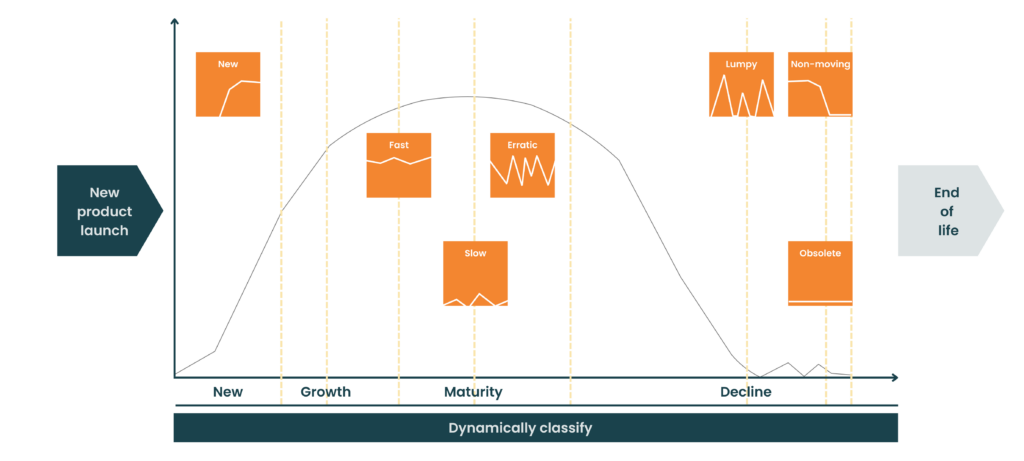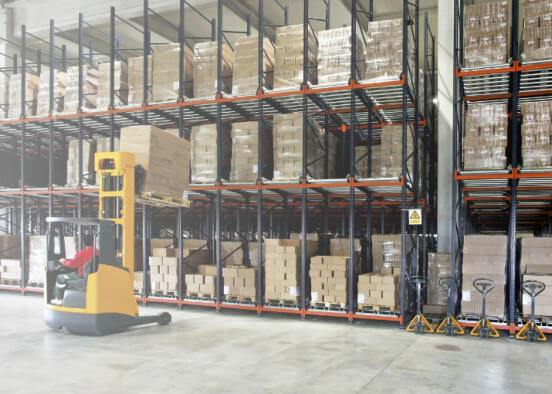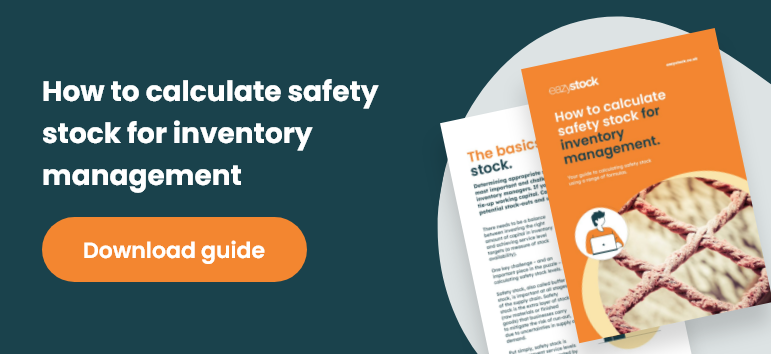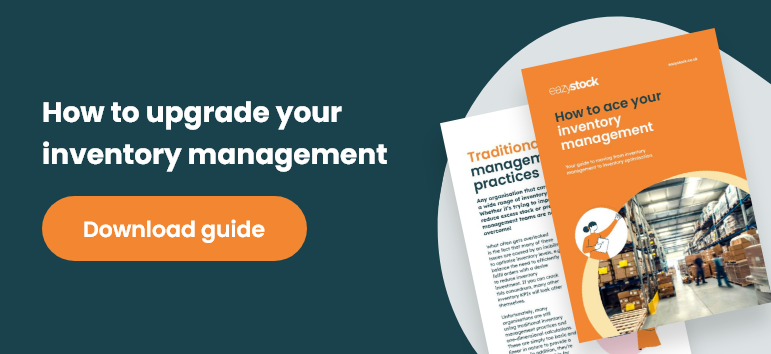How to manage excess stock in your inventory
What is excess stock?
Excess stock is a common term used in inventory management for when inventory levels exceed forecasted demand. Excess stock is also known as overstock, stock surplus, excessive stock, or excess inventory. But, no matter what you call it, one thing remains constant: the threat it represents to your company’s bottom line.
Common causes of excess stock
Excess stock levels are typically caused by three culprits:
- Inaccurate demand forecasting
- Poor replenishment tactics
- Lack of product life cycle tracking
1. Excess stock due to inaccurate demand forecasting
Items will build up on warehouse shelves if you over-forecast the needs of the marketplace and order more inventory than you’re likely to sell. It’s therefore important to get your demand forecasts as accurate as possible. This involves identifying those with seasonality and/or upward/downwards trends and adjusting the forecasts accordingly. You also need to account for external factors, such as competitor activity – for example, if your competitors drop their prices or launch a new product, this could lead to a drop in sales of you own products. Read more on demand forecasting accuracy here.
2. Poor replenishment tactics and excess stock
Inventory replenishment involves ordering the right amount of stock at the right time to meet forecasted demand. You can prevent a build up of excess stock by continuously adjusting your reordering points and quantities in line with supply and demand variables.
3. Excess stock management and the product life cycle
All products go through a life cycle – from market introduction, through maturity, to decline (though products don’t necessarily always follow the path through the life cycle linearly). Excess inventory often occurs during the declining stage of the product life cycle, shown in the graph below. While there’s still typically demand for the product, it’s beginning to phase out, and if you fail to spot this, you’ll continue to order based on previous demand patterns. Inventory planners that cannot actively monitor the demand stages of their SKUs run the risk of getting stuck with a large quantity of excess stock, due to inaccurate forecasting.

In a best case scenario, a company can hope to sell off most of the excess stock and break-even on their investment or only lose a small percentage of profit. But if excess stock is not liquidated, it typically transitions to obsolete stock, which almost always leads to a large and painful expense on the books.
Common misconceptions of excess stock
Businesses can sometimes falsely believe that excess stock is beneficial. In most cases it isn’t. Here are a few misconceptions put right:
“Excess stock achieves higher service levels (order fill rates) efficiently”
Always having inventory on hand means always having products ready to fulfill sales opportunities – right? While this seems like a logical thought process, many businesses stumble by tying up too much capital in excess stock to guarantee product availability. Having a 100% fill rate on all products is not always the smart thing to do when you’re trying to effectively manage your inventory costs and stock turnover. Smart inventory planners know they need to balance having low levels of inventory while also ensuring products are available to meet demand. The process of achieving low inventory levels while maintaining high service levels is called inventory optimization.
“Excess stock allows higher safety stock levels (buffer stock)”
Don’t confuse excess stock with safety stock. They are not the same thing! Safety stock is a strategic and calculated level of stock that helps reduce the risk of stock outs due to unknown situations. Safety stock is included in the reorder point formula to account for variables such as supplier lead times or demand fluctuations. Effective safety stock levels ensure there’s always inventory available to meet sales demands and keep customers happy.Safety stock levels should be adjusted based on demand forecasts, seasonality variances, trends, supplier lead times and a product’s place in its life cycle. This ensures a business is not left with excess stock. Companies that leverage inventory optimization software such as EazyStock have the ability to more accurately calculate safety stock to ensure excess stock is avoided.
“It’s worth having excess stock for bulk purchase savings”
Most businesses will see savings when purchasing supplies in bulk quantities. They can also save on shipping costs e.g. one large order is cheaper than adding up shipping and handling costs from multiple smaller batch orders. However, committing to large quantities comes with the risk of demand uncertainty for every product ordered.
Companies that can intelligently forecast their demand and strategically optimize their replenishment processes will see greater cost efficiencies, without burdening themselves with orders too large. The key is to find the optimal time when an item must be reordered and in what quantities to ensure a continuous balance of inventory to meet demand (all while ensuring inventory isn’t piling up in stock locations). Read our whitepaper on replenishment to find out how to set the most cost-effective reordering times and quantities.
Disadvantages of excess stock
Carrying excess stock levels has many cost implications. Below are three of the top reasons why you need a good excess stock management policy to ensure you keep inventory levels healthy at all times.
High opportunity costs
 Holding excessive levels of inventory ties up business funds that could be invested in other areas, such as research and development or marketing. The cost of the inventory is not recouped until it is sold, and the longer this takes, the longer working capital remains unavailable.
Holding excessive levels of inventory ties up business funds that could be invested in other areas, such as research and development or marketing. The cost of the inventory is not recouped until it is sold, and the longer this takes, the longer working capital remains unavailable.Increased carrying costs
The cost of warehousing can include the warehouse space, utilities and maintenance of the storage area. Some stock may also require additional maintenance, such as temperature control to preserve the quality of the material. Excess stock of slow moving products eats up space in your warehouse when you could be holding higher demand products instead. Inventory levels can be reduced by up to 30% by simply improving forecasting methods and replenishment practices.
Quality reduction & product degradation
Storing items for longer than anticipated can lead to quality problems. In these situations, businesses may need to sell off stock at a reduced price or purchase new materials as replacements – both of which can be costly.
Do I have excess stock?
All types of inventory can be broken down into three categories:
Cycle stock: The inventory you plan to sell, based on demand forecasts.
Excess stock: When stock levels (plus safety stock) for a product exceed forecasted demand.
Obsolete stock: When stock remains in the warehouse but there is no demand (typically for at least 12 months).
Why not analyze your stock and categorize it into these segments? Understanding the current status of your inventory provides an initial insight into its health. Ideally, you should only be carrying cycle stock or ‘healthy’ inventory items that are purposely held to meet customer demand.
At EazyStock we offer a free stock health analysis service, where we’ll use our software to analyze your current stock levels and provide the above insights, as well as giving you valuable, actionable recommendations to make any necessary improvements.
Excess stock management solutions
Interested in learning how to drive down excess stock levels without the risk of stock outs? Contact EazyStock and schedule a demo to discover our excess stock management solution that will reduce inventory costs while increasing performance and profitability.









